Resources
Below you will find facts on ancient Egyptian life. Sources are listed to provide a way to pursue additional information.
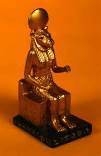
SEKHMET is one of the oldest known Egyptian deities. Her name is derived from the Egyptian word "Sekhem" (which means "power" or "might") and is often translated as the "Powerful One". She is depicted as a woman with the head of a lion or a cat. Sometimes with the addition of a sun disc on her head.
Sekhmet was the warrior goddess as well as the goddess of healing for Upper Egypt when the kingdom of Egypt was divided. She is depicted as a lioness, the fiercest hunter known to the Egyptians. It was said that her breath formed the desert. She was seen as the protector of the Pharaohs and led them in warfare.
Her cult was so dominant in the culture that when the first Pharaoh of the twelfth dynasty, Amenemhat I, moved the capital of Egypt to Itjtawy, the centre for her cult was moved as well. Religion, the royal lineage, and the authority to govern were intrinsically interwoven in Ancient Egypt during its approximately three millennia of existence.
Sekhmet is a Solar Deity, sometimes called the daughter of the Sun God Ra and often associated with the goddess Hathor and Bast.
source: Wiki-pedia
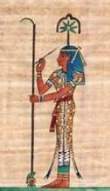
SESHAT was the Ancient Egyptian goddess of wisdom, knowledge, and writing. She was seen as a scribe and record keeper, and her name means she who scrivens (i.e. she who is the scribe), and is credited with inventing writing. Mistress of the House of Books is another title for Seshat, being the deity whose priests oversaw the library in which scrolls of the most important knowledge were assembled and spells were preserved. Heliopolis was the location of her principal sanctuary.
source: Wiki-pedia
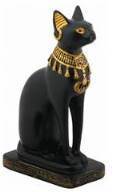
The cat was central to the Egyptian religion and was considered to be sacred. Many animals in Egypt were linked to gods and goddesses, but only the cat was considered to be semi-divine in its own right. As a demi-god, a cat could not be owned by a mere human. Only the semi-divine pharaoh had that honour.
The goddess BAST was closely associated with cats and often depicted as a cat or a woman with the head of a cat (although in early periods she is more often a sand cat (a type of wildcat). Her temple in Bubastis housed a huge colony of cats as attested by the massive cemetery dedicated to the semi-divine temple cats. Crown Prince Thuthmosis (the son of Amenhotep II and the elder brother of Amenhotep IV who went on to become the pharaoh Akhenaten) had an image of his beloved cat inscribed on his sarcophagus.
source: ForeverFeline.com/cats in ancient Egypt
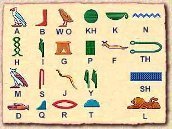
The Egyptian hieroglyphic script was developed about four thousand years before Christ. There was also a decimal system of numeration up to a million. Unlike other cultures the early picture forms were never discarded or simplified probably because they are so very lovely to look at. Hieroglyphs were called, by the Egyptians, “the words of God” and were used mainly by the priests.
These painstakingly drawn symbols were great for decorating the walls of temples but for conducting day to day business there was another script, known as hieratic This was a handwriting in which the picture signs were abbreviated to the point of abstraction.
Hieroglyphs are written in rows or columns and can be read from left to right or from right to left. You can distinguish the direction in which the text is to be read because the human or animal figures always face towards the beginning of the line. Also the upper symbols are read before the lower.
source: DiscoveringEgypt.com/Egyptian Hieroglyphic Alphabet
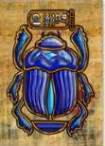
The SCARAB: By far the most important amulet in ancient Egypt was the scarab, symbolically as sacred to the Egyptians as the cross is to Christians. Scarabs were already known in the Old Kingdom, and in the First Intermediate Period the undersides were decorated. They were probably sacred in the Prehistoric Period and had a role in the early worship of animals, judging from the actual beetles that were found stored in jars buried with the deceased and from those found in graves during the time of King Den of Dynasty I. A scaraboid-shaped alabaster box from Tarkhan seems to confirm that the scarab was already venerated at the beginning of Dynasty I. Scarabs are the most numerous amulets and were produced well beyond the dynastic periods.
In one form, scarabs were a cheap and common form of "charm" which everyone could afford and easily wear strung on a cord on their person. Most scarabs were made for the living. The small magical object was believed imbued with particualar protective powers that warded off evil and provided good things for the owner for this life and also for the next, particularly when sewn to mummy wrappings. This was especially true when worn as a heart scarab or winged scarab to provide a safe journey into the Afterworld of the gods.
Source: McClung Museum - Egyptian Scarabs